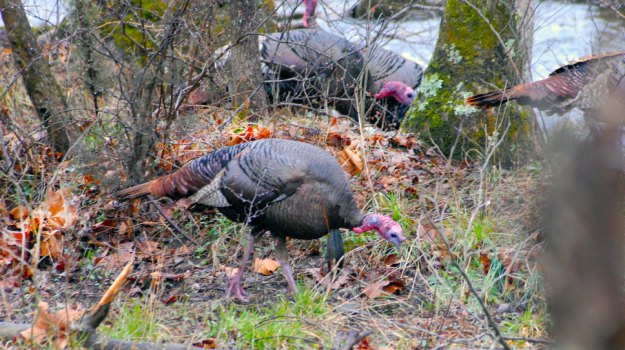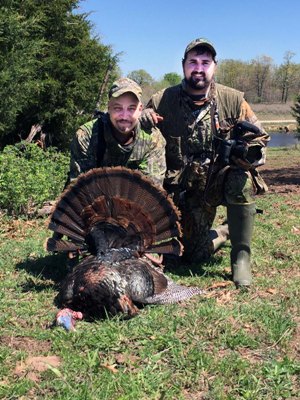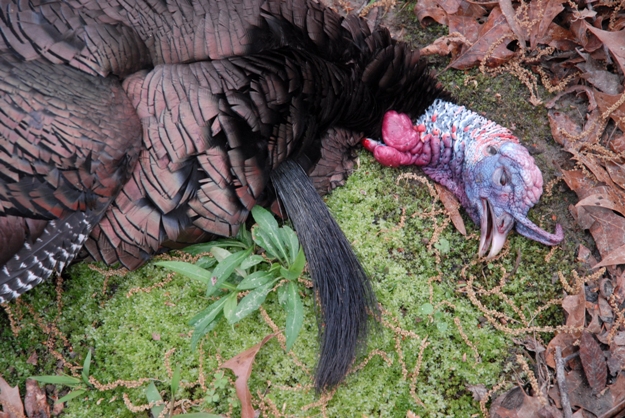Calling and Taking Late Season Gobblers in New York State with Paul Butski

Editor’s Note: Paul Butski from Niagara Falls, New York, has been hunting turkeys for 47 years and entered his first turkey-calling contest in 1978. He has won three National Wild Turkey Federation (NWTF) Grand Nationals, six U.S. Open Championships and the Levi Garrett Open twice. Butski was one of the first turkey-calling contestants who signed with Mossy Oak at the very beginning of the company. Butski is also one of the hosts of the “Mossy Oak Turkey T.H.U.G.S.” TV show.
Our turkey season in New York opens May 1. There is not really a big difference in hunting turkeys in New York than hunting turkeys anywhere else. Primarily, I hunt in big hardwoods, because we don’t have much agriculture where I live. We do have some mountainous terrain. So, I believe the number-one key is to find a high spot where you can hear great distances. We have a really-good county road system. Once you hear a turkey gobble, if you know about where the turkey is located, you can save a lot of walking time by hopping into your vehicle and driving close to where you heard the turkey gobble. When I'm hunting in my home state of New York, I primarily hunt public lands.
During the first week of turkey season, we usually have fairly heavy hunter pressure. However, toward the end of May, hardly any turkey hunters are in the woods on public grounds. For that reason, I much prefer to hunt the last 2 weeks of the season rather than the first 2 weeks of the season. In those last 2 weeks, I believe every turkey I call - has been called to before. However, at the first of the season, most of the gobblers are still henned-up. So, by the end of the season, how many people already have called to those turkeys doesn’t matter. I've found taking a bird in the last 2 weeks of the season is easier than in the first 2 weeks when so many people are calling to the turkeys and the gobblers are henned-up.
 One of the problems of hunting late-season turkeys is that by the end of the season, all the trees are leafed-out and hearing a turkey gobbler can be much more difficult. When I’m calling to turkeys, I always start off soft calling and continue to call louder and louder. Then maybe a turkey in the distance can hear me. I run-and-gun a lot. I try to cover plenty of ground to find a lonesome gobbler who wants to talk to me. Another one of my late-season turkey-hunting tactics is: once I start calling, I set-up and prepare to take a turkey at any time. I only may sit for 15 minutes, because I believe that’s enough time for a close turkey to come in, even if he’s coming in silent. If a turkey at a distance has heard me calling, and he's coming, he usually will gobble back within 15 minutes to try to relocate the hen that’s been calling to him.
One of the problems of hunting late-season turkeys is that by the end of the season, all the trees are leafed-out and hearing a turkey gobbler can be much more difficult. When I’m calling to turkeys, I always start off soft calling and continue to call louder and louder. Then maybe a turkey in the distance can hear me. I run-and-gun a lot. I try to cover plenty of ground to find a lonesome gobbler who wants to talk to me. Another one of my late-season turkey-hunting tactics is: once I start calling, I set-up and prepare to take a turkey at any time. I only may sit for 15 minutes, because I believe that’s enough time for a close turkey to come in, even if he’s coming in silent. If a turkey at a distance has heard me calling, and he's coming, he usually will gobble back within 15 minutes to try to relocate the hen that’s been calling to him.
I'm a lifelong diaphragm mouth-calling addict. However, late in the season when the leaves are out, I’ve always got one of those really-long, really-loud box calls with me too. Some people refer to this style of box call as a boat paddle call. It has a higher-pitched sound, and it carries much farther and deeper into the woods than the diaphragm call. On windy days and in thick woods with a lot of foliage, if I haven’t heard a turkey gobble, I’ll finish off my call sequence using a long box call. When I'm hunting flat, clear ground in Texas, if I want my call to be able to reach out and touch a turkey at long range, I’ll use one of those long box calls.
In the early part of the season, if I don’t hear a turkey gobble within about 2 minutes after I call, I’ll leave that location. But in the late season, if I’m fairly confident that a gobbler is in the area I’m calling to, I’ll stay a minimum of 15 minutes and often up to 30 minutes.
Tomorrow: The Turkeys That Get Away with Paul Butski






























